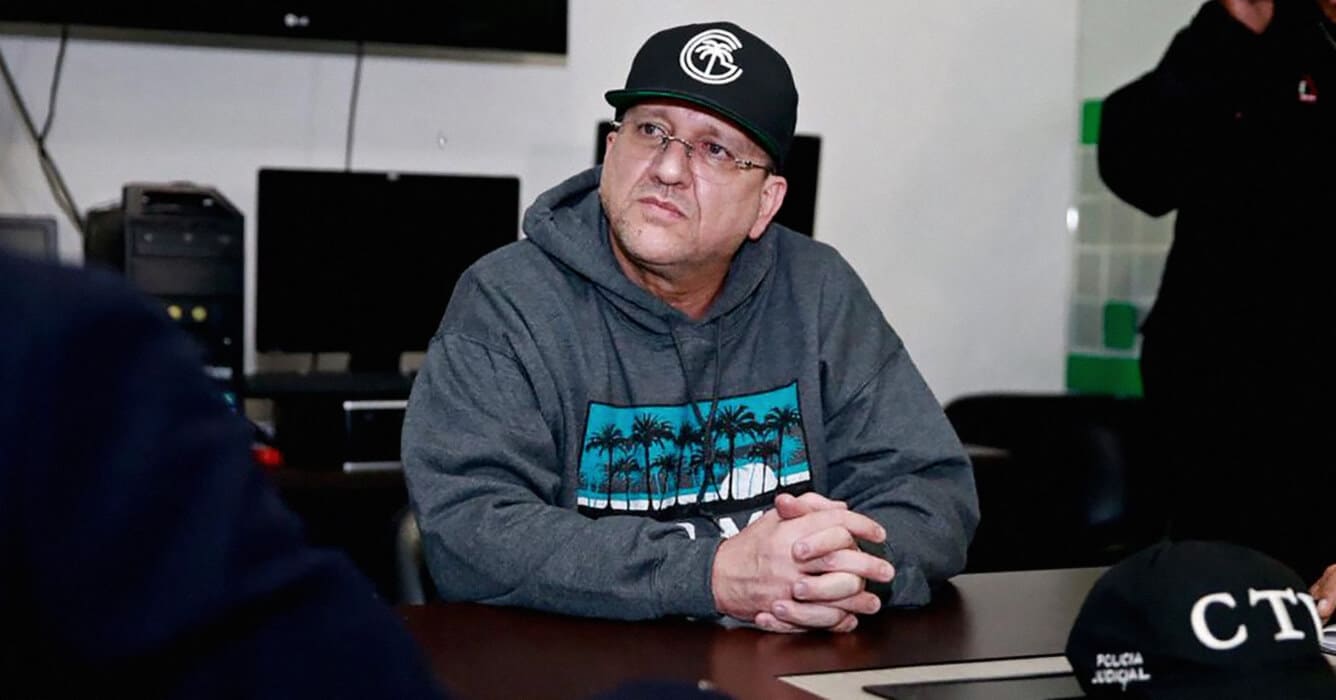Authorities in Colombia have arrested an infamous former paramilitary warlord after he returned to the Andean nation upon finishing his US prison sentence for drug charges, raising concerns about his possible reemergence as a major drug trade player.
Carlos Mario Jiménez, alias “Macaco,” one of the most powerful commanders in the United Self-Defense Forces of Colombia (Autodefensas Unidas de Colombia – AUC), was taken into custody by Colombian authorities after returning from the United States, where he served 11 years in prison for drug trafficking, migration officials announced in a July 20 news release.
Jiménez led the powerful Central Bolívar Bloc of the AUC paramilitary army, which demobilized more than 5,000 fighters during the group’s peace process with the Colombian government between 2003 and 2006.
Jiménez controlled several key drug trafficking regions, including the southern part of Bolívar department and the Bajo Cauca region of Antioquia department, both focal points of Colombia’s cocaine trade. He was in 2005 one of the most powerful drug traffickers in Colombia, and therefore the world.
SEE ALSO: Colombia News and Profiles
Jiménez also brought together a group of paramilitary fighters in Caparrapí in the central department of Cundinamarca in 1996 and formed Los Caparrapos. The group has since gone on to become a major criminal player in Colombia and is thriving due to alliances with the National Liberation Army (Ejército de Liberacíon Nacional – ELN) and the ex-FARC mafia, former fighters from the Revolutionary Armed Forces of Colombia (Fuerzas Armadas Revolucionarios de Colombia – FARC) who continue to manage criminal economies.
Jiménez took part in the AUC’s demobilization, but authorities determined that the former paramilitary leader continued to run his drug trafficking empire from prison. As a result, he was extradited to the United States in 2008 and later sentenced to 33 years in jail after pleading guilty to drug charges. It’s unclear why he was freed early from prison.
After refusing to continue cooperating with the transitional justice system set up as part of the AUC’s peace process, Jiménez was stripped of his judicial benefits. Although he is seeking to take advantage of the judicial structure set up as part of the FARC’s 2016 peace deal in an effort to avoid the host of criminal charges he faces.
Prosecutors say he will now be tried before a civilian court for multiple homicides and other crimes he allegedly committed during Colombia’s decades-long armed conflict.
InSight Crime Analysis
Jiménez managed to run his drug empire from prison once before, and he could potentially do so again. But he returns to a criminal landscape that is vastly different than the one he left behind in the early 2000s when he was a powerful paramilitary leader, as well as a major drug trafficker.
While jailed at a maximum security prison in Itaguí just south of Medellín, Jiménez continued to direct his drug trafficking networks, which ultimately led authorities to agree to his extradition and that of 14 other top AUC leaders to the United States in 2008. He was put on a naval frigate in the middle of the ocean before he was extradited.
But even with Jiménez out of Colombia, the trafficking networks he left behind continued moving cocaine into the United States, primarily through the Bajo Cauca region and southern Bolívar. These are areas he once controlled for the AUC and where he would be most likely to renew his efforts.
Bajo Cauca could be particularly vulnerable. The area is a hotbed for criminal violence due to fighting between Los Caparrapos, the Urabeños, the ELN and ex-FARC mafia. All of these criminal groups are vying for control of this highly strategic drug trafficking region, in part because it connects to the Cauca River, a major asset for moving drugs. In addition, official data shows Bajo Cauca had more than 7,000 hectares of coca crops registered in 2017.
SEE ALSO: Caparrapos Thriving in Colombia Due to Alliances With ELN, Ex-FARC Mafia
Jiménez could also find himself a pivotal ally in Bajo Cauca: Los Caparrapos. After he founded the group in Cundinamarca in the late 1990s, they expanded rapidly into Antioquia and Bajo Cauca in the 2000s, working with Vicente Castaño, a notorious AUC chief who later went on to found the Urabeños drug trafficking group.
Jiménez has a profound understanding of the territory, having fought alongside Los Caparrapos against the ELN in the 2000s. As such, Jiménez could reach out to the current commander of Los Caparrapos, Emiliano Alcides Osorio Maceas, alias “Caín,” in order to try and influence the group’s operations.
However, the group has undergone several changes to its leadership. It’s unclear if Osorio Maceas or any of the commanders under him would still agree to work with Jiménez after his long absence.
As for the south of Bolívar, Jiménez’s Central Bolívar Bloc controlled most of this subregion up until 2005, when the AUC was demobilizing.
The Magdalena River flows directly through this area, serving as a cocaine super-highway for moving drugs to the north of the country. Southern Bolívar is also home to thousands of hectares of coca crops.
But Jiménez would face trouble kickstarting his operations there due to the presence of an old enemy: the ELN. These guerrillas now manage much of the drug trafficking activities that take place in southern Bolívar. For Jiménez to influence the criminal landscape there, he would have to either forge an alliance with the ELN, or create a strong fighting force to battle them for control of this territory.
Both scenarios seem unlikely to succeed.
Wherever Jiménez might decide to focus his attention, being jailed again will surely make this more difficult. But if the government has not focused on improving its oversight mechanisms, history might repeat itself and the former warlord could become a renewed threat in Colombia.
Photo: Former AUC paramilitary leader Carlos Mario Jiménez, alias “Macaco,” in Colombian custody (c/o Colombia’s Attorney General’s Office)

